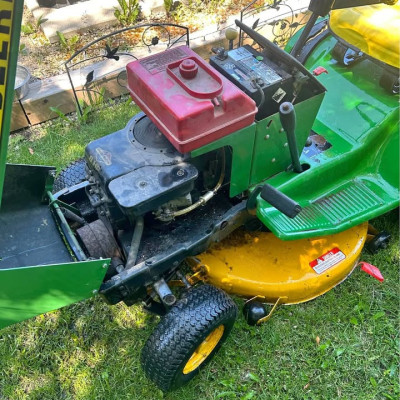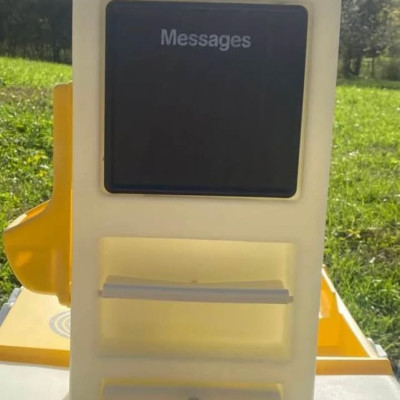How to Break the Habit of Nail-Biting
Nail-biting, or onychophagia, is a common habit that affects many people, often starting in childhood and continuing into adulthood. While it might seem like a harmless way to pass the time, nail-biting can lead to damaged nails, infections, and other health issues. If you’re looking to break free from this habit and achieve healthier, more beautiful nails, follow this comprehensive guide on how to stop biting your nails for good.
---
#### **1. Understand the Triggers**
The first step to breaking the habit is understanding what triggers your nail-biting. Common triggers include:
- **Stress and Anxiety* Many people bite their nails as a way to cope with stress or anxiety.
- **Boredom* Nail-biting can be a way to pass the time when you’re feeling bored or restless.
- **Nervous Habits* Some people bite their nails out of habit, especially in situations where they feel nervous or uncomfortable.
To address the habit effectively, keep a journal to track when and why you bite your nails. Identifying your triggers can help you develop strategies to manage them.
#### **2. Keep Your Nails Trimmed**
Maintaining short, well-groomed nails can make nail-biting more difficult and less appealing. Regularly trimming your nails reduces the temptation to bite and helps prevent damage to your nail beds.
**Tips for Nail Maintenance*
- **Use Nail Clippers* Keep your nails neatly trimmed using high-quality nail clippers.
- **File Regularly* Use a nail file to smooth out any rough edges and prevent snagging.
- **Moisturize* Apply hand cream and cuticle oil to keep your nails and surrounding skin healthy.
#### **3. Apply Bitter Nail Polish**
One of the most effective ways to deter nail-biting is to use a bitter-tasting nail polish. These polishes are designed to taste unpleasant, making you less likely to bite your nails.
**How to Use Bitter Nail Polish*
- **Apply a Thin Layer* Apply the bitter nail polish to clean, dry nails. Follow the manufacturer’s instructions for the best results.
- **Reapply as Needed* Reapply the polish as needed, especially if it starts to wear off.
#### **4. Find Alternative Stress-Relief Techniques**
If stress or anxiety is a major trigger for your nail-biting, finding alternative ways to manage these feelings can be helpful. Consider trying:
- **Exercise* Regular physical activity can help reduce stress and improve your overall well-being.
- **Meditation and Deep Breathing* Techniques like mindfulness meditation and deep breathing exercises can help calm your mind.
- **Hobbies* Engaging in hobbies or activities you enjoy can keep your hands busy and distract you from the urge to bite your nails.
#### **5. Use Fidget Toys**
Fidget toys can provide a healthy outlet for the energy or restlessness that might otherwise lead to nail-biting. Try using:
- **Stress Balls* Squeeze a stress ball to keep your hands occupied.
- **Fidget Spinners* Spin a fidget spinner to distract yourself from the urge to bite your nails.
- **Tactile Toys* Toys with different textures can keep your fingers engaged.
#### **6. Practice Good Nail Hygiene**
Taking good care of your nails can reduce the temptation to bite them. When your nails look and feel healthy, you’re less likely to want to damage them.
**Nail Care Tips*
- **Keep Nails Clean* Wash your hands and nails regularly to remove dirt and bacteria.
- **Apply Nail Treatments* Use nail strengthening treatments or clear polish to protect and strengthen your nails.
#### **7. Seek Professional Help**
If you find it difficult to break the habit on your own, consider seeking help from a mental health professional. Cognitive-behavioral therapy (CBT) and other therapeutic approaches can help address the underlying causes of nail-biting and provide you with strategies to overcome the habit.
**Therapy Options*
- **Cognitive-Behavioral Therapy (CBT)* CBT can help you identify and change negative thought patterns and behaviors associated with nail-biting.
- **Behavioral Therapy* A therapist can work with you to develop new coping mechanisms and strategies to replace nail-biting.
#### **8. Set Realistic Goals and Celebrate Progress**
Breaking the habit of nail-biting takes time and effort. Set realistic goals and celebrate your progress along the way.
**Goal-Setting Tips*
- **Start Small* Set short-term goals, such as going a week without biting your nails.
- **Reward Yourself* Treat yourself to a small reward when you reach your goals, such as a manicure or a favorite activity.
#### **9. Stay Accountable**
Share your goal of stopping nail-biting with friends or family members who can provide support and encouragement. Having someone to talk to can help keep you motivated and accountable.
**Accountability Tips*
- **Find a Support Buddy* Connect with someone who can offer encouragement and check in on your progress.
- **Join a Support Group* Look for online or local support groups for people trying to break the nail-biting habit.
#### **10. Be Patient with Yourself**
Breaking a habit takes time, and setbacks are a natural part of the process. Be patient with yourself and stay committed to your goal. Every day without biting your nails is a step in the right direction.
**Self-Compassion Tips*
- **Forgive Yourself* If you slip up, don’t be too hard on yourself. Acknowledge the setback and refocus on your goals.
- **Stay Positive* Keep a positive mindset and remind yourself of the benefits of breaking the habit.
### Final Thoughts
Breaking the habit of nail-biting requires a combination of understanding your triggers, maintaining good nail care, and finding effective alternatives to manage stress and boredom. By following these steps and staying committed to your goal, you can overcome the habit and enjoy healthier, more beautiful nails. Remember, it’s a journey, and every small step forward is a victory. Keep focused, stay motivated, and celebrate your progress along the way.
#nailbitingsolutions #healthynails #breakinghabits #nailcare
Beğen
Yorum Yap
Paylaş





